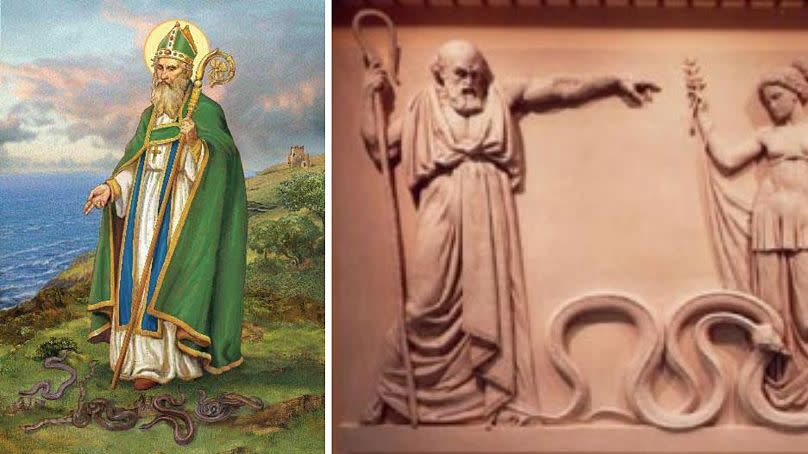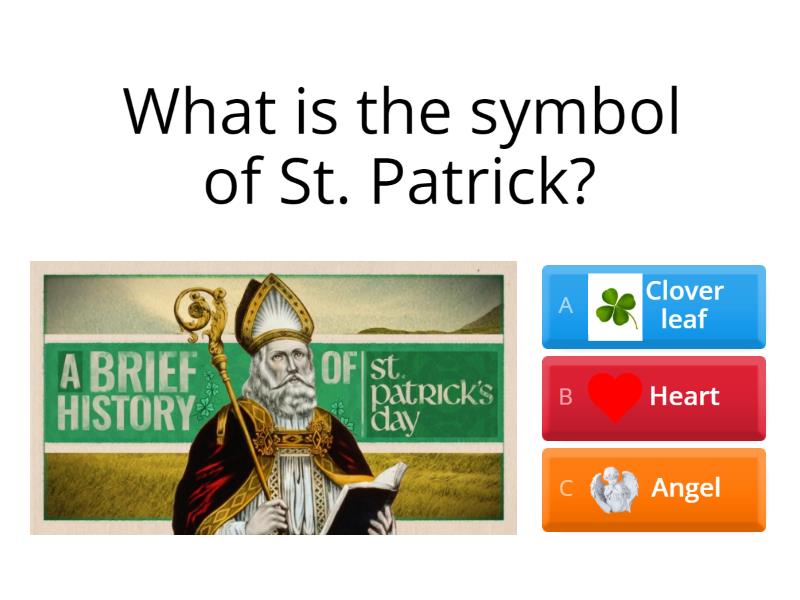Gallery
Photos from events, contest for the best costume, videos from master classes.
 |  |
 |  |
 |  |
 |  |
 | |
 |  |
For St. Patrick’s Day 2013, the New York Times reported on the phenomenon and talked to Kevin Cunningham, founder of the National Exotic Animal Sanctuary, which took in many abandoned snakes. As a young pagan, I believed this myth and would don a temporary snake tattoo every St. Patrick’s Day. Or, I’d wear all black in an anti-St. Patrick’s Day statement. Because, the idea that Saint Patrick drove out the pagans is an easy belief to get behind. The problem is that it’s not true. A prayer card illustration showing Saint Patrick driving the snakes out of Ireland, published circa 1900 (Image: Popperfoto via Getty Images/Getty Images). Scientists and historians argue that this has nothing to do with St Patrick's intervention, though. The red-haired, green-clothed Leprechaun is commonly associated with St. Patrick’s Day. The original Irish name for these figures of folklore is “lobaircin,” meaning “small-bodied fellow.” Key Facts about St Patrick's Day. Spiritual Significance: St. Patrick's Day honors the arrival of Christianity in Ireland and Saint Patrick’s missionary work.; Symbols: The shamrock represents the Holy Trinity, and a legend claims St. Patrick banished snakes from Ireland. The TRUE Meaning of "St. Patrick's Day" is about the Christians driving the 'Snakes' out of Ireland, aka: they killed Pagans. The first St. Patrick's Day Parade actually took place in Boston, Massachusetts, back in 1737; the city is known for its high percentage of residents who claim an Irish ancestry. However, some modern Pagans refuse to observe a day which honors the elimination of an old religion in favor of a new one. The snake has always represented transformation, healing, and rebirth—even in ancient Irish myth. To drive out the snake was to drive out fear, superstition, and tribalism—and replace it with a faith built on unity, renewal, and grace. St. Patrick’s myth is not about biology—it’s about symbolism that outlasts bone and skin. It’s a story that has been passed down through generations, becoming an integral part of Irish identity and celebrated annually on St. Patrick’s Day. Frequently Asked Questions (FAQs) About St. Patrick and the Snakes 1. Was St. Patrick Irish? Actually, no. St. Patrick was born in Roman Britain, likely in Scotland. Today, New York City’s annual St. Patrick’s Day Parade is one of the largest and most famous in the world, attracting millions of spectators. St. Patrick’s Day in Modern Times. Today, St. Patrick’s Day is celebrated far beyond Ireland and Irish immigrant communities. St. Patrick's Day Jeopardy No teams 1 team 2 teams 3 teams 4 teams 5 teams 6 teams 7 teams 8 teams 9 teams 10 teams Custom Press F11 Select menu option View > Enter Fullscreen for full-screen mode The legend of St. Patrick ridding Ireland of snakes in the 5th century is a fascinating tale enticing both foreigners and residents. During an attempt to fast for 40 days, the saint was attacked by a group of snakes. Whether you credit him with banishing snakes, bringing Christianity or giving us a bank holiday weekend, St Patrick's Day is undoubtedly an excellent chance to celebrate our small country. Some Pagans feel that St. Patrick’s Day co-opts the energy of this sacred time, replacing its original meaning with a Christian narrative and commercialized festivities. The contrast between the profound spiritual significance of Ostara and the often-superficial celebrations of St. Patrick’s Day can be deeply offensive to those who honor 3. A possible St. Patrick snakes meaning. The most widely accepted St. Patrick snakes meaning is that is all comes back to how the devil is depicted in the Bible as a snake. It’s believed that the snakes in Ireland were in fact pagan beliefs. More on this below. The story behind St. Patrick banishing snakes from Ireland The Saint and the Serpents: Unraveling the Legend of St. Patrick and the Snakes. The saint most famously associated with driving snakes out of Ireland is St. Patrick.Legend claims he banished all serpents from the Emerald Isle, chasing them into the sea after they attacked him during a 40-day fast. This idea is very widespread in the pagan community, but is coming from one source in the 1911 book ‘Fairy Faith in Celtic Countries’ (page 444) where a man speculates that a certain lough is where saint Patrick had a final confrontation with the Druids and drove them out, and that he assumes the druids and snakes were the same because the The Hidden Symbolism of Snakes in Celtic Lore on St. Patrick’s Day. Let’s be honest: St. Patrick’s Day is all about green beer, shamrocks, and people pinching you for not wearing enough green. But beyond the rowdy parades and rivers dyed an unnatural shade of emerald, there’s a hidden, ancient symbol writhing beneath the surface—snakes. Saint Patrick is a revered figure in Ireland, and St. Patrick’s Day has become a global celebration of all things Irish. Beyond the parades and pints of green beer, there’s a deeper spiritual significance to this day that often gets overlooked. “So St. Patrick’s Day has that sort of deeper meaning for us, but it’s not to say that nobody should celebrate it.” As the legend goes, one of St. Patrick’s most notable deeds was driving the snakes out of the Emerald Isle indefinitely. Snakes were never in Ireland, however, according to historians and fossil records.
Articles and news, personal stories, interviews with experts.
Photos from events, contest for the best costume, videos from master classes.
 |  |
 |  |
 |  |
 |  |
 | |
 |  |